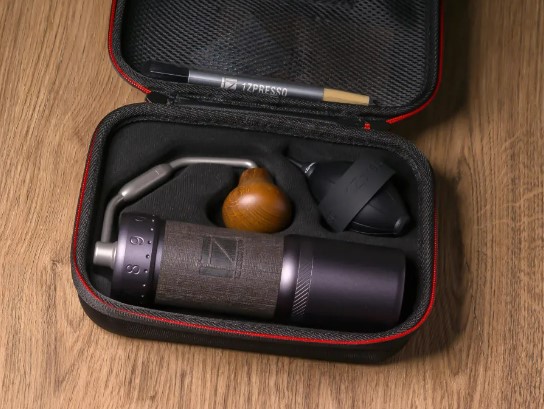Master the Art of Grinding Coffee Beans: A Guide to Coffee Grinders
For coffee fanatics, the process of grinding coffee beans is more than simply a regular job; it is an art kind that can significantly influence the flavor and top quality of the last mixture. Recognizing the subtleties of different mill kinds, picking the suitable work size, and employing the right strategies are necessary steps in the direction of attaining that ideal mug of coffee.
Kinds Of Coffee Grinders
There are three primary types of coffee grinders generally used by coffee enthusiasts: blade mills, burr mills, and hands-on mills. Blade grinders are the most standard type, making use of a simple blade to chop the coffee beans. While they are affordable and easy to use, they commonly cause uneven coffee grounds due to irregular grinding. Burr grinders, on the other hand, offer more accuracy by crushing the beans in between a relocating grinding wheel and a non-moving surface. This causes an uniform grind size, which is essential for a regular coffee flavor. Burr grinders can be found in both level and conelike shapes, each offering somewhat different grinding attributes.
Manual mills, as the name suggests, need hand-operated effort to grind the coffee beans. They are often chosen by those that take pleasure in the process of hand brewing coffee or for those who value transportability. Hands-on grinders can differ in layout, from straightforward handheld models to much more elaborate counter top variations. While they might need more initiative, hands-on mills use control over the grinding process, enabling customers to change the grind size to their choice. Each kind of coffee mill has its advantages and optimal usage cases, dealing with the varied choices of coffee enthusiasts.

Selecting the Right Work Size
With an understanding of the various kinds of coffee grinders, the following important action in accomplishing the ideal cup of coffee is picking the ideal grind dimension. The work size plays a considerable duty in figuring out the flavor profile of your coffee (1Zpresso J-Max). Different brewing methods call for specific work sizes to optimize the extraction of flavors from the coffee grounds
For a crude work, perfect for French press and cold brew techniques, the coffee beans need to look like breadcrumbs, offering a robust and vibrant taste. Medium-coarse grinds, ideal for Chemex or Clever Dripper, have a texture comparable to rugged sand, offering a balanced taste.
Tool grinds, typically made use of in drip coffee machine, have an uniformity resembling regular sand, resulting in a well-rounded taste. Great grinds, finest for espresso devices, are similar to salt, yielding an abundant and intense taste. Ultimately, extra-fine grinds, made use of in Turkish coffee, are as great as powdered sugar and generate a strong and potent mixture.
Grinding Methods for Ideal Taste
To draw out the greatest possibility of flavor from your coffee beans, understanding appropriate grinding methods is vital. Uniformity is key when it comes to grinding coffee beans for optimum taste. By paying interest to these grinding methods, you can raise the taste profile of your coffee and enjoy an extra gratifying mug every time.
Maintenance and Cleaning Up Tips

In enhancement to normal cleansing, it is critical to examine your mill for any kind of indications of wear or damages. Check the blades, burrs, and various website link other parts for any kind of monotony or breakdowns. Change any worn-out parts without delay to preserve the quality of your coffee work. Lastly, shop your grinder in a completely dry and tidy atmosphere to avoid any moisture or dirt from influencing its efficiency. By adhering to these upkeep and cleaning ideas, you can make sure that your coffee mill remains to deliver tasty freshly ground coffee for several years to find.
Troubleshooting Common Grinder Issues


Guaranteeing your coffee grinder functions smoothly needs adept troubleshooting of typical problems that may develop during its use. One typical problem with coffee grinders is inconsistent grind size. This problem can happen due to dull blades, incorrect calibration, or uneven coffee beans. To resolve this, guarantee your mill's blades are sharp and appropriately lined up, calibrate the mill according to the desired grind size, and drink the grinder carefully while in operation to aid achieve an extra uniform grind.
This can take place when oils from the coffee beans build up and block the grinder's chute. To settle this, disassemble the mill and clean all parts extensively, paying unique attention additional hints to the chute and burrs.
Lastly, if your grinder is creating too much noise during procedure, it could show a trouble with the motor or interior components. In such cases, it is advisable to get in touch with the manufacturer's directions for troubleshooting actions or look for professional help to diagnose and remedy the problem without delay.
Conclusion
To conclude, grasping the art of grinding coffee beans entails recognizing the various kinds of coffee grinders, selecting the appropriate grind size, using appropriate grinding strategies for optimal taste, and preserving and cleansing the grinder on a regular basis. By following these standards and repairing usual grinder concerns, coffee fanatics can elevate their coffee brewing experience and delight in a scrumptious cup of coffee every time.